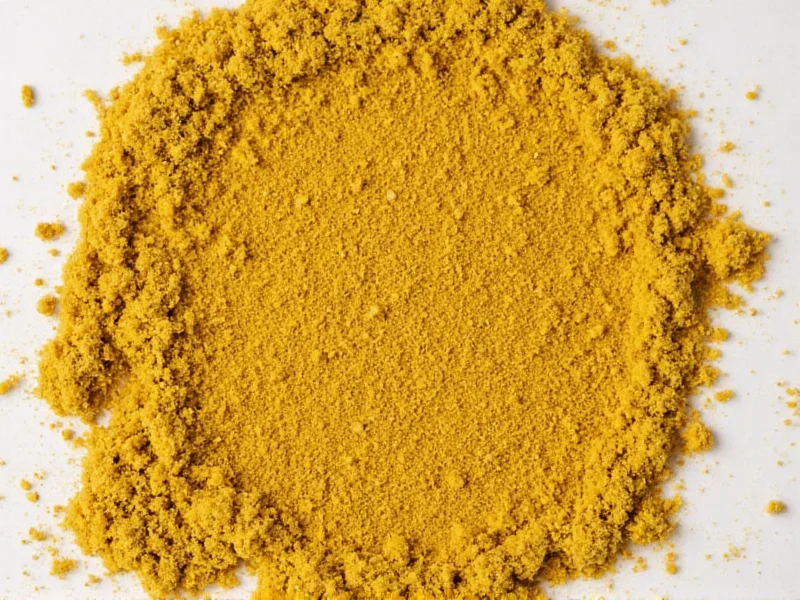Ground mustard serves as a fundamental spice in kitchens worldwide, transforming ordinary dishes with its complex flavor profile. When mustard seeds are finely milled into powder form, they retain their dormant enzymes that only activate upon contact with liquid. This chemical reaction produces the characteristic heat and aroma associated with mustard, making ground mustard a dynamic ingredient that chefs can precisely control in their recipes.
How Ground Mustard Is Made
The production process begins with harvesting mustard seeds from Brassica plants. Yellow mustard seeds create the mildest powder, while brown and black seeds yield progressively more pungent varieties. After cleaning and drying, manufacturers grind these seeds into a fine, consistent powder using specialized milling equipment. Unlike prepared mustard, authentic ground mustard contains no added liquids, preservatives, or vinegar—just pure mustard seed powder.
Ground Mustard vs. Mustard Powder: Understanding the Terminology
Many consumers wonder about the difference between ground mustard and mustard powder. In culinary practice, these terms are generally interchangeable. Both refer to the same product: finely milled mustard seeds without additional ingredients. Some manufacturers may add small amounts of anti-caking agents like cornstarch or rice flour to prevent clumping, but pure ground mustard contains only mustard seeds.
| Mustard Form | Composition | Shelf Life | Flavor Activation |
|---|---|---|---|
| Ground Mustard | 100% ground mustard seeds | 2-3 years | Requires liquid to activate |
| Prepared Mustard | Ground mustard + vinegar/liquid | 1-2 years after opening | Ready to use | Whole Mustard Seeds | Intact yellow/brown/black seeds | 3-4 years | Requires crushing and liquid |
Flavor Profile and Culinary Applications
Ground mustard delivers a sophisticated flavor that evolves when mixed with liquid. Initially warm and slightly bitter, it develops complex notes ranging from earthy to subtly fruity depending on the seed variety. Professional chefs value ground mustard for its ability to enhance flavors without dominating dishes. When properly incorporated into recipes, it acts as a flavor amplifier rather than a standalone taste.
Culinary professionals use ground mustard in numerous applications:
- Marinades: Helps tenderize proteins while adding depth
- Dressings: Creates stable emulsions in vinaigrettes
- Rubs: Forms crusts on meats without burning
- Sauces: Adds complexity to cheese sauces and gravies
- Baking: Enhances flavor in pretzels and certain breads
Proper Storage Techniques for Maximum Freshness
To maintain ground mustard's potency, store it in an airtight container away from heat and light. Exposure to moisture causes clumping and premature activation of enzymes, diminishing flavor quality. When stored properly in a cool, dark pantry, ground mustard retains optimal flavor for 2-3 years. For extended shelf life, refrigeration can preserve freshness for up to 4 years, though condensation risks must be managed.
Effective Substitutes When Ground Mustard Isn't Available
While nothing perfectly replicates ground mustard's unique properties, several alternatives work in emergencies. Prepared mustard requires recipe adjustments to account for added liquid content—typically use 1 tablespoon prepared mustard for every 1 teaspoon ground mustard. Mustard seeds provide similar flavor but require grinding and longer preparation time. Turmeric with a pinch of horseradish offers color and heat approximation but lacks the distinctive mustard complexity.
Nutritional Benefits and Considerations
Ground mustard contains beneficial compounds including selenium, magnesium, and omega-3 fatty acids. The glucosinolates in mustard seeds demonstrate antioxidant properties that may support metabolic health. With only about 5 calories per teaspoon and negligible fat content, ground mustard provides flavor enhancement without significant caloric impact. Unlike prepared mustards that often contain added sugars and preservatives, pure ground mustard remains a clean, whole-food ingredient.
Common Questions About Ground Mustard
What is the difference between ground mustard and dry mustard?
Ground mustard and dry mustard are identical products—both refer to finely milled mustard seeds without added liquids. The terms are used interchangeably in culinary contexts, though some regional variations in terminology exist. Both activate their characteristic flavor only when mixed with liquid ingredients.
How does ground mustard thicken sauces?
Ground mustard contains natural mucilage that absorbs liquid and creates viscosity when mixed with water or other liquids. Unlike flour or cornstarch, it thickens sauces without creating a pasty texture, instead contributing to a smooth, emulsified consistency while adding flavor complexity.
Can ground mustard expire?
While ground mustard doesn't technically expire, it loses potency over time. Properly stored in an airtight container away from light and moisture, it maintains optimal flavor for 2-3 years. After this period, it remains safe to consume but delivers diminished flavor impact in recipes.
Why does ground mustard taste different than prepared mustard?
The flavor difference stems from activation method. Ground mustard develops flavor gradually when mixed with liquid, allowing control over pungency. Prepared mustard undergoes immediate, full activation during manufacturing, creating a consistent but less nuanced flavor profile that cannot be adjusted in cooking.
What dishes benefit most from ground mustard?
Ground mustard excels in cheese sauces, salad dressings, meat rubs, and marinades where its flavor-enhancing properties shine. It's particularly valuable in recipes requiring emulsification or subtle heat without vinegar's sharpness, such as in classic British cheese-on-toast or certain types of barbecue sauces.











 浙公网安备
33010002000092号
浙公网安备
33010002000092号 浙B2-20120091-4
浙B2-20120091-4